Shadee Edralin, Dr. Jared Romero
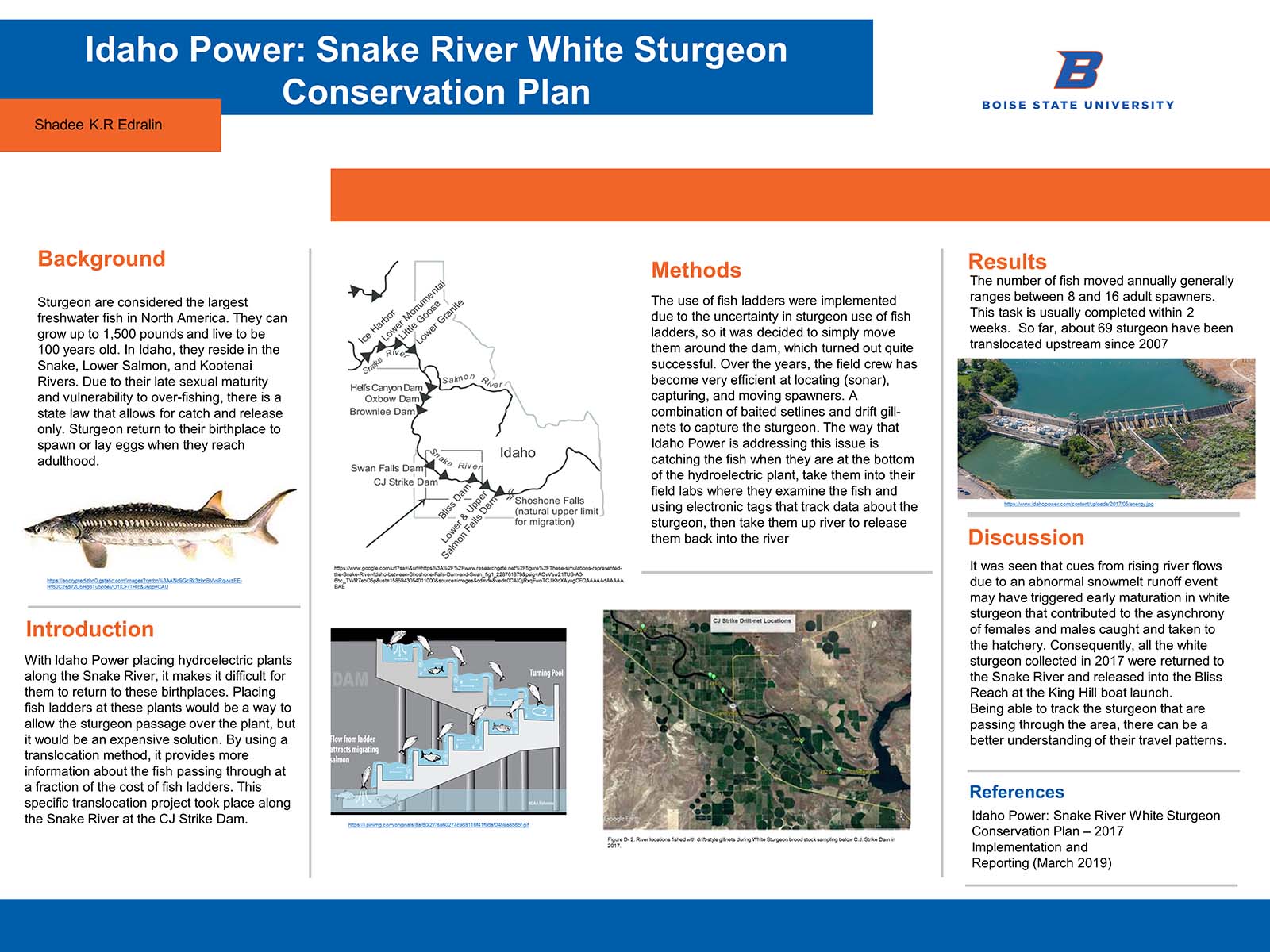
Background

Sturgeon are considered the largest freshwater fish in North America. They can grow up to 1,500 pounds and live to be 100 years old. In Idaho, they reside in the Snake, Lower Salmon, and Kootenai Rivers. Due to their late sexual maturity and vulnerability to over-fishing, there is a state law that allows for catch and release only. Sturgeon return to their birthplace to spawn or lay eggs when they reach adulthood.
Introduction
With Idaho Power placing hydroelectric plants along the Snake River, it makes it difficult for them to return to these birthplaces. Placing fish ladders at these plants would be a way to allow the sturgeon passage over the plant, but it would be an expensive solution. By using a translocation method, it provides more information about the fish passing through at a fraction of the cost of fish ladders. This specific translocation project took place along the Snake River at the CJ Strike Dam.
Methods
The use of fish ladders were implemented due to the uncertainty in sturgeon use of fish ladders, so it was decided to simply move them around the dam, which turned out quite successful. Over the years, the field crew has become very efficient at locating (sonar), capturing, and moving spawners. A combination of baited setlines and drift gill-nets to capture the sturgeon. The way that Idaho Power is addressing this issue is catching the fish when they are at the bottom of the hydroelectric plant, take them into their field labs where they examine the fish and using electronic tags that track data about the sturgeon, then take them up river to release them back into the river
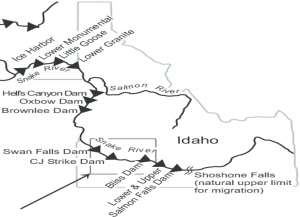
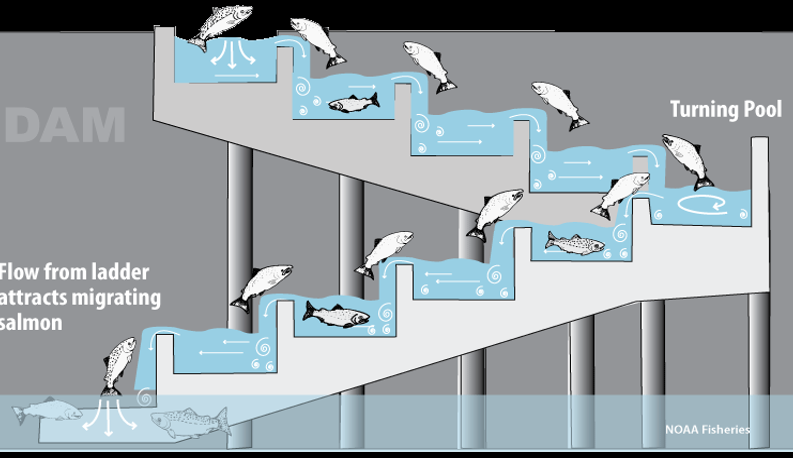
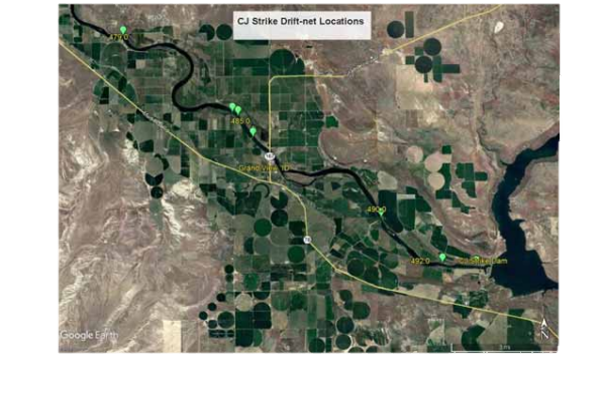
Results
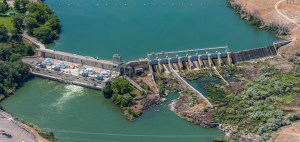
The number of fish moved annually generally ranges between 8 and 16 adult spawners. This task is usually completed within 2 weeks. So far, about 69 sturgeon have been translocated upstream since 2007
Discussion
It was seen that cues from rising river flows due to an abnormal snowmelt runoff event may have triggered early maturation in white sturgeon that contributed to the asynchrony of females and males caught and taken to the hatchery. Consequently, all the white sturgeon collected in 2017 were returned to the Snake River and released into the Bliss Reach at the King Hill boat launch.
Being able to track the sturgeon that are passing through the area, there can be a better understanding of their travel patterns.
References
Idaho Power: Snake River White Sturgeon
Conservation Plan – 2017
Implementation and
Reporting (March 2019)
Additional Information
For questions or comments about this research, contact Shadee Edralin at shadeeedralin@u.boisestate.edu.